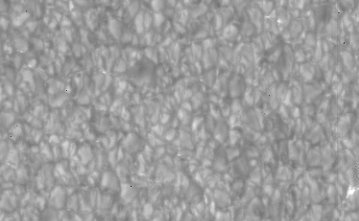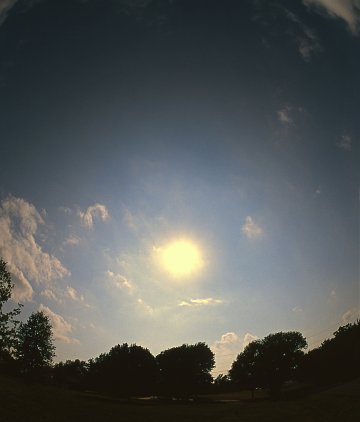 Where's Saturn? Is that a UFO--or the ISS? What's the name of that star? Get the answers from mySKY--a fun new astronomy helper from Meade. . Where's Saturn? Is that a UFO--or the ISS? What's the name of that star? Get the answers from mySKY--a fun new astronomy helper from Meade. . PROMINENCE ALERT: A beautiful solar prominence is dancing over the northeastern limb of the sun: image. If you have a solar telescope, take a look. BOILING SUN: Today the sun is blank--no sunspots. What does a solar spacecraft observe on such a day? This morning Japan's Hinode spacecraft photographed a blank patch of the solar surface and sent this image back to Earth: 
The "blank" surface is seething with solar granules. The sun is so hot, it literally boils. Granules are bumps on the boiling surface, much like the bumpy surface of water boiling on a hot stove. One difference: While the granules on your stove are only a few centimeters across, granules on the sun are as wide as Texas. Even when the sun is blank, Hinode shows, there is something to see. BISHOP'S RING: " I stepped outside of work at 4:00 pm today, and noticed a rather bright blue aureole around the sun with a radius similar to a garden variety solar halo, bordered by a faint yellowish corona," says Doug Zubenel of Johnson County, Kansas. "The darkness of the photo's corners is due to the drop in brightness of the sky outside the halo - no vignetting from the lens is occurring at all." (continued below) 
Photo details: Nikon FM2, 16mm Nikkor fisheye lens, f/8, 1/500 sec, Fuji Velvia 50
This phenomenon is called a Bishop's Ring. "It is essentially a corona
produced by very small (1 micron or less) particles or droplets," explains atmospheric optics expert Les Cowley. "A large volcano injecting fine ash into the stratosphere can produce these effects for years." There haven't been any big eruptions lately. Instead, suggests Cowley, this Bishop's Ring may have been caused by a distant wildfire wafting its ash over middle America. "We shall likely never know!" he says. Consider it a beautiful mystery.
September 2007 Aurora Gallery
[August 2007 Aurora Gallery] [Night-sky Cameras] | 
